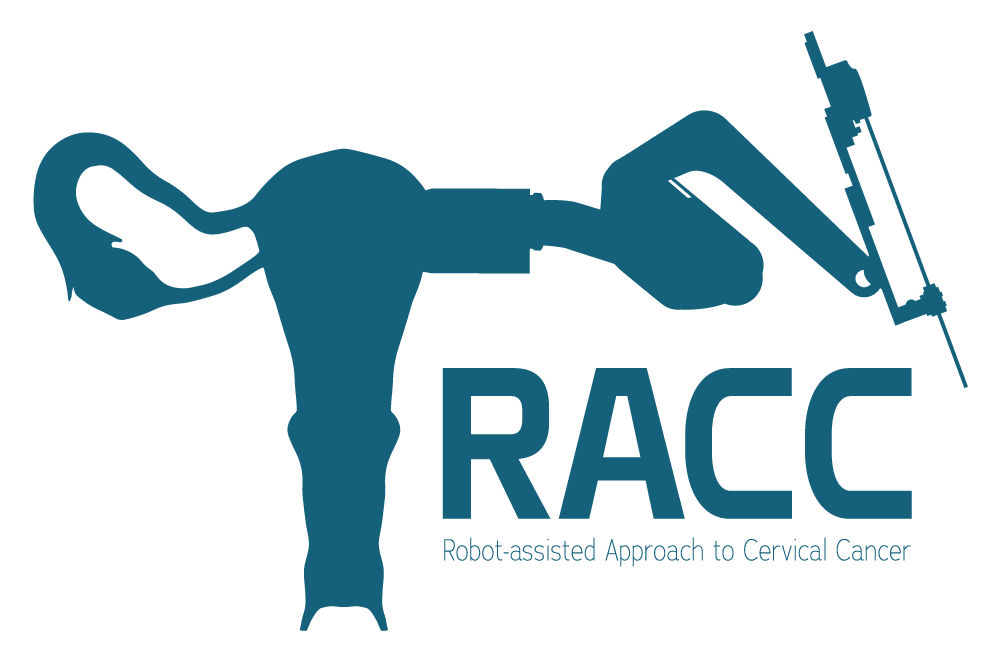
Breast Cancer Care
When you’re a patient at Providence, we don't just treat your breast cancer – we treat you. We use the most advanced treatments to create a highly personalized care plan. We also support you and your loved ones with a full range of services throughout your entire cancer journey. The result is effective, whole-person care for your body, mind and spirit.
Why Choose Us for Breast Cancer Care?
At Providence, we see the life in you. We know how important family celebrations and special occasions can be. Together let’s finish cancer so you don’t have to miss any of these moments.
About Breast Cancer
Breast cancer is a cancer that forms in the cells of breast tissue. It is more common in women, but men can get breast cancer too. The expert oncology teams at Providence use the most effective therapies to treat patients with every type of breast cancer and its related conditions, including:
- Lobular carcinoma in situ (LCIS)
- Ductal carcinoma in situ (DCIS)
- Invasive breast cancer
- High-risk breast program
Testing and Diagnostics

Diagnostic tools help our cancer clinicians determine which therapies will work best for each patient, based on many factors like cancer type and the genetic or molecular profile of the tumor. Your doctors will use multiple advanced diagnostic and prognostic tools to help them design your individualized treatment plan. Depending on your case, this may include one or more of the following:
- Breast magnetic resonance imaging (MRI)
- Mammography (2D, 3D)
- Gene expression assay
- Genetic testing and counseling
- HER2/Neu
- Hormone receptor (HR) status
- Ultrasonography
Personalized Treatment for Breast Cancer
We take a multidisciplinary team approach to your breast cancer treatment, because we know this offers the best success in controlling and curing cancer. Your multidisciplinary cancer care team will work with you to design an individualized cancer care plan, from diagnosis to post-treatment support. We offer many different therapies across our Providence locations. Depending on your condition, your personal care plan may include one or more of the following:
Systemic therapies travel through the bloodstream and affect cells in other body parts. They are used for patients whose cancer has spread to other areas of the body or if there’s a high risk of spread. Sophisticated genetic analysis allows us to target therapies to specific DNA mutations that cause cancer cells to develop and grow. Systemic therapies include:
Chemotherapy is the systemic use of cytotoxic chemicals to kill cancer cells. Today there are many medications (e.g., biological medications, immune treatments, targeted therapies) that do not fit the classic definition of chemotherapy yet are often included in this category.
Clinical trials represent research protocols that include the use of new drugs or drug combinations in a specific clinical situation.
Hormone therapy is the use of drugs that inhibit the production or block the effect of certain hormones (usually sex hormones), helping to control cancer-cell growth.
Immunotherapy uses drugs to allow the body’s own immune system to more effectively find and destroy cancer cells.
Molecularly targeted therapy is the use of drugs that are molecularly targeted at a genetic mutation that has allowed the cancer to grow. This therapy enables personalized treatments for patients who carry certain genetic mutations or abnormalities.
Surgical therapies involve an operation or procedure to remove cancer from the body. Surgery may be the main treatment for some invasive cancers, but it’s only one part of the entire treatment plan. Surgical therapies include:
Advanced axillary surgery techniques can be used to prevent the accumulation of lymphatic fluid (lymphedema) that leads to swelling. Two such procedures are reverse lymphatic mapping, which allows surgeons to identify lymph nodes that can be preserved during surgery, and lymphovenous bypass surgery, which enables surgeons to reestablish lymphatic drainage.
Aesthetic flat closure mastectomy is a surgical technique in which breast skin and fat are rearranged after a mastectomy, resulting in a smooth, flat, chest-wall contour. This can be performed at the time of mastectomy, or later.
Axillary lymph node dissection involves the surgical removal of groups of lymph nodes under the armpit and examining them to determine whether cancer is present.
Excisional breast biopsy is a surgical procedure to diagnose breast cancer. A suspected tumor or abnormality is completely removed from the breast and tested for cancer cells.
Excisional breast biopsy using targeted localization techniques uses tools or instruments to help the surgeon identify the exact location of a growth or abnormality before removing it entirely. The tissue is then tested for the presence of cancer cells.
Lumpectomy, also known as partial mastectomy, is a procedure in which only cancerous tissue is removed from the breast. This option allows the patient to keep most of their breast.
Mastectomy with immediate reconstruction is a surgical procedure that involves removing and reconstructing the breast during the same procedure. Surgeons may use an implant or tissue from another area of the body.
Nipple-sparing mastectomy is a surgical procedure that removes breast tissue underneath the nipple and areola but leaves those areas and the surrounding skin intact.
Oncoplastic lumpectomy is a surgical procedure that involves removing a tumor in the breast while making the result look as natural as possible. Surgeons may move tissue or perform other cosmetic procedures to hide the visible effect of the surgery.
Sentinel lymph node mapping and biopsy is a minimally invasive procedure that involves the use of a mapping technique to identify and remove the first lymph node(s) to which cancer cells are most likely to have spread from the primary tumor.
Skin-sparing mastectomy is a surgical procedure in which the skin of the breast is left intact, but all breast tissue, including the nipple and sometimes the areola, is removed.
Risk-reducing mastectomy is a mastectomy that is performed to prevent breast cancer from developing in patients with a higher-than-average risk of the disease. In some cases, the nipple and areola may be retained for breast reconstruction.
Total mastectomy is a surgical procedure to remove all breast tissue, including skin, nipple and areola.
Radiation therapy uses high-energy radiation from a source like X-rays or photons to kill cancer cells or shrink tumors. It may be part of a treatment plan that also includes systemic therapies and/or surgery. Radiation is sometimes used to help ease a patient’s pain or discomfort. Radiation therapies include:
Active Breathing Coordinator™ (ABC) is a radiation therapy support system that turns the radiation beam on and off in response to the breathing cycle of the patient for optimal treatment.
Accelerated partial breast irradiation (APBI) is a localized radiation therapy to kill cancer cells that may have been left behind following a lumpectomy. It focuses the radiation on a very narrow margin of normal tissue around the surgical site, as opposed to the entire breast, and a higher dose of radiation is given over a shorter time than in standard whole-breast irradiation.
Brachytherapy is an approach to delivering radiation treatment from a source implanted inside the body. These sources may be placed either permanently or temporarily at the tumor site.
By delivering radiation directly into a tumor, this technique spares the surrounding normal tissue any exposure to radiation and the side effects that it may bring.
This advanced procedure requires a sophisticated facility and equipment, along with highly specialized physicians and support. It is available at some Providence locations.
Hypofractionated whole breast radiation therapy is a treatment that uses larger doses of radiation to the whole breast for a shorter period of treatment.
Intensity-modulated radiation therapy (IMRT) and volumetric-modulated arc therapy (VMAT) are advanced types of radiation therapies. IMRT uses advanced technology to manipulate the radiation beams to conform to the shape of a tumor. VMAT is a subtype of IMRT in which the machine actively delivers radiation beams while moving in an arc around the patient.
This method of radiation delivery offers next-generation capabilities. The arc-based therapy provided via VMAT delivers high doses of radiation to more focused areas, reducing side effects and the overall treatment time for the patient. This treatment is particularly effective at treating several types of cancer while at the same time reducing toxicity and harm to vital organs.
This procedure is one of several new ways to deliver radiation therapy. It requires a sophisticated facility and equipment, along with highly specialized physicians. It is available at some Providence locations.
Intraoperative radiation therapy (IORT) is the delivery of radiation directly to tissues that are accessible during surgery. It is typically used when the cancer is difficult to remove and there is an expectation that there may be microscopic disease remaining. Because this radiation treatment is delivered surgically, healthy organs or tissue can sometimes be moved out of the way or shielded from the radiation to minimize toxicity.
Stereotactic radiation (SABR/SBRT) is a group of treatments that includes stereotactic body radiation therapy (SBRT) and stereotactic ablative radiation (SABR) – both of which are adaptations of stereotactic radiosurgery (SRS) – for the treatment of targets in the body, but outside the brain. Similar to SRS, these techniques deliver very high doses of radiation using sophisticated motion management and patient immobilization techniques.
The number of radiation treatments is minimal and may range from one to five treatments delivered over one to two weeks.
This procedure is one of several new ways to deliver radiation therapy. It requires a sophisticated facility and equipment, along with highly specialized physicians. It is available at some Providence locations.
Stereotactic radiosurgery (SRS) is the delivery of high-dose radiation treatment to a target using special patient immobilization techniques and sophisticated imaging to confirm highly accurate targeting. This is commonly delivered in a single treatment. Some commonly used SRS systems are gamma knife and cyber knife.
Surface-guided radiation therapy (SGRT/SIGRT) is an approach to radiation targeting that offers real-time beam guidance from face and body surface-recognition systems.
This treatment is particularly effective at treating several types of cancer while at the same time reducing toxicity and harm to vital organs, thus minimizing side effects.
This advanced procedure requires a sophisticated facility and equipment, along with highly specialized physicians. It is available at some Providence locations.
Three-dimensional conformal radiation therapy (3DCRT) is a radiation planning and treatment technique in which three-dimensional (3D) imaging enables improved targeting for radiation treatment. 3D planning with CT imaging makes radiation treatment much more conformal, or tailored to the target.
Additional therapies may also be part of your treatment plan.
You’ll be provided with cancer supportive therapies to prevent or relieve symptoms, and to keep you as comfortable as possible throughout the course of your treatment. These may include:
Lymphedema therapy may include several types of therapy used to address the buildup of lymph fluid that can be caused by cancer or its treatment. These treatments may include massage, the wrapping of an extremity or the use of mechanical pumps to move fluid back into circulation.
Find Breast Cancer Care Close to You
Accreditations
We are proud to see our dedication to our cancer patients recognized by some of the most well-respected programs and institutions in the United States. Several of our Providence locations have achieved the following accreditations:
- Accountable Care Organizations (ACO) Accreditation – National Committee for Quality Assurance (NCQA)
- Accreditation Program for Excellence (APEx) – American Society of Radiation Oncology (ASTRO) ®
- American College of Radiology (ACR)
- Commission on Cancer (CoC) Accreditation – American College of Surgeons (ACS)
- Integrated Network Cancer Program (INCP) – American College of Surgeons (ACS)
- National Accreditation Program for Breast Center (NAPBC) – American College of Surgeons (ACS)
- Quality Oncology Practice Initiative (QOPI) Certification – American Society of Clinical Oncology (ASCO)
Meet the Team
At Providence, you'll have access to a vast network of dedicated and compassionate providers who offer personalized care by focusing on treatment, prevention and health education.

Find Clinical Trials
Are you looking for a clinical trial for yourself or for a patient? We’d love to help you find one!
Find Care
Expert Tips and Advice for Cancer





